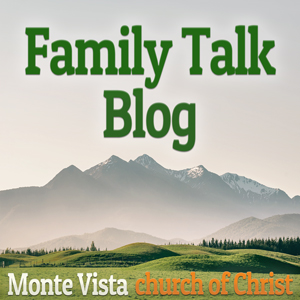The instructions for constructing the Tabernacle begin with the most significant artifact of Israel’s worship of God, The Ark (Exodus 25:10-22). It is sometimes called The Ark of the Covenant of the Lord (Numbers 10:33) and other times, the Ark of Testimony (Numbers 4:5). By the names, it signifies that it contains the contract, the covenant, with Israel, and the documents testifying to Israel’s acceptance of the covenant. By construction, it was a rectangular box designed to contain items important to Israel’s history. By its spiritual significance, it represents the meeting place of God and man for justice, offering God’s blessings to His people but also His judgment seat over His people. The various details worked into the Ark display God’s power, sovereignty, honor, and glory. The Ark is also the shadow of God’s promised home of the faithful in His presence for eternity.
The placement and isolation of the Ark away from the people are addressed in the New Testament as “a symbol for the present time” (Hebrews 9:9). Under the Law, the High Priest entered the presence of God above the Ark once each year. “Only the high priest enters once a year, not without taking blood, which he offers for himself and for the sins of the people committed in ignorance” (Hebrews 9:7). But when Christ ascended back into heaven, He entered the actual presence of God having offered His own blood. “But when Christ appeared as a high priest of the good things to come, He entered through the greater and more perfect tabernacle, not made with hands, that is to say, not of this creation; and not through the blood of goats and calves, but through His own blood, He entered the holy place once for all, having obtained eternal redemption“ (Hebrews 9:11-12).
The significance of the physical sprinkling of animal blood in and on the Ark and the Mercy Seat placed on its top (Leviticus 16:14-17) shadowed the blood of Christ shed for our sins and our redemption from wages sin. The blood of bulls and goats only delayed the penalty for sins “But in those sacrifices there is a reminder of sins year by year. For it is impossible for the blood of bulls and goats to take away sins” (Hebrews 10:3-4). The blood of Christ, the antitype of all sacrificial blood spilled, removed the guilt of sin and declared the faithful to be justified (Hebrews 9:11-14); (Romans 5:9).
There may also be a type in the craftsmanship of the Tabernacle. God wanted perfection in constructing the place and items Israel would have and use as they worshiped Him. So He filled man with the Spirit to meet His exact specifications. “Now the LORD spoke to Moses, saying, “See, I have called by name Bezalel, the son of Uri, the son of Hur, of the tribe of Judah. “I have filled him with the Spirit of God in wisdom, in understanding, in knowledge, and in all kinds of craftsmanship, to make artistic designs for work in gold, in silver, and in bronze, and in the cutting of stones for settings, and in the carving of wood, that he may work in all kinds of craftsmanship. “And behold, I Myself have appointed with him Oholiab, the son of Ahisamach, of the tribe of Dan; and in the hearts of all who are skillful I have put skill, that they may make all that I have commanded you” (Exodus 31:1-6).
As Jesus built His church, He gave similar aid to those apostles chosen to spread the gospel. “But I tell you the truth, it is to your advantage that I go away; for if I do not go away, the Helper will not come to you; but if I go, I will send Him to you. “And He, when He comes, will convict the world concerning sin and righteousness and judgment; concerning sin, because they do not believe in Me; and concerning righteousness, because I go to the Father and you no longer see Me; and concerning judgment, because the ruler of this world has been judged. “I have many more things to say to you, but you cannot bear them now. “But when He, the Spirit of truth, comes, He will guide you into all the truth; for He will not speak on His own initiative, but whatever He hears, He will speak; and He will disclose to you what is to come. “He will glorify Me, for He will take of Mine and will disclose it to you” (John 16:7-14).
The building of the Tabernacle and the church were too important to leave to the fallible mind and talents of men. Therefore, God ensured the perfection of the building by taking direct action in the construction. The first was a physical set of architecture and furnishings, and the second was a spiritual body. Both provided all the necessities of acceptable worship for the time—Israel under the Law of Moses and Christians under the Gospel of Christ. We can read and learn from the first in the Old Testament. We can read, study, and live by the Law of Christ in the New Testament. The shadow has been replaced by the fullness of God’s redemption and fellowship.
